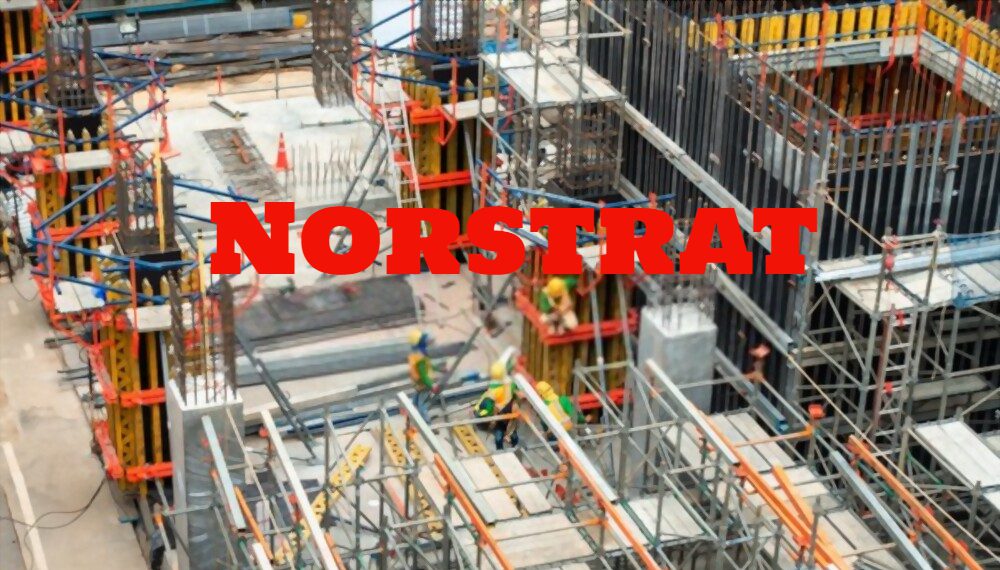Real estate assessments have traditionally been conducted through physical inspections of properties, which can be time-consuming and expensive. However, advancements in technology have allowed for a new form of property assessment: virtual inspections. Virtual property inspection allows for the evaluation of properties without the need for an on-site visit by an assessor. This article will explore the advantages of virtual property inspection and how it is revolutionizing the real estate industry.
The use of virtual property inspection has become increasingly popular due to its efficiency and convenience. With remote access to properties, assessors can easily evaluate a wider range of properties without having to travel to each location. Additionally, virtual property inspections are often less costly than traditional inspections as they eliminate transportation and accommodation costs associated with physical visits. As such, many real estate companies are beginning to implement this innovative form of assessment into their operations as a means of improving productivity while saving costs.
Table of Contents
The Advantages of Virtual Property Inspection

The utilization of remote technology for property inspection presents a range of benefits, including enhanced accuracy, time and cost efficiency. With virtual inspections, real estate professionals can evaluate properties without the need for physical visits, which can save significant amounts of time and money. Remote inspections allow evaluators to move through properties remotely using specialized cameras and software that capture high-resolution images, videos, and 3D models of buildings’ interiors and exteriors.
Furthermore, virtual evaluations offer greater accuracy since they provide a more comprehensive view of properties than traditional in-person inspection methods. Virtual tours enable professionals to examine every nook and cranny of property in detail without missing any critical details. This level of precision is essential when assessing the value or condition of a building accurately. Overall, leveraging remote technologies for property inspections can significantly improve efficiency while reducing costs associated with traditional on-site assessments.
The Role of Technology in Virtual Property Inspections
It is quite ironic that the role of technology in the current section on property evaluations seems to overshadow the very essence of what makes a physical inspection necessary in the first place. However, recent advances in technology have provided real estate professionals with innovative tools for virtual property inspections. One such tool is real-time feedback, which allows inspectors and clients to communicate immediately about any concerns or issues found during a virtual inspection.
Another critical aspect that has emerged from these technological advancements is the use of 3D visualization techniques. Various software applications now enable agents to create 3D models of properties that feature all structural details and measurement parameters accurately. These models can be used by buyers, sellers, and investors alike as they provide an immersive experience that helps them better understand the property without physically visiting it.
Additionally, these models are useful for architects and interior designers who need precise measurements to plan their projects accurately. Overall, technology has played a crucial role in making virtual property inspections more efficient and accurate than ever before.
Remote Property Assessments: A Game-Changer for Real Estate
Like a powerful new tool for real estate professionals, remote property assessments are revolutionizing the way that properties are evaluated and providing accurate insights into their value. Remote accuracy and cost efficiency are two of the most significant benefits offered by virtual property inspections.
With remote assessments, agents no longer have to make physical visits to properties in order to conduct evaluations. Instead, they can use high-tech software programs that provide a comprehensive view of each property from the comfort of their offices or homes.
Moreover, remote property assessments allow for greater accuracy and precision in determining a property’s value. By using advanced technology such as 3D imaging and drones, inspectors can gather detailed information about every aspect of a building or piece of land. This level of detail makes it easier for real estate professionals to identify potential issues with a property before making an offer or listing it on the market. Ultimately, virtual inspections save time and money while also improving the quality of real estate assessments.
How Virtual Property Inspection is Revolutionizing the Industry
As the real estate industry embraces technological advancements, virtual property evaluations are emerging as a key tool that provides detailed insights into the value and potential of assets. In contrast to traditional property inspections that require on-site visits, virtual inspections leverage cutting-edge technologies such as 3D modelling, AI-powered analytics and drones to conduct assessments remotely.
This approach brings significant cost-effectiveness benefits for both buyers and sellers in terms of reduced travel expenses, faster turnaround times and more efficient use of resources.
Moreover, virtual property inspection also offers accuracy improvements in comparison to traditional methods. By leveraging high-resolution imaging technology coupled with advanced machine learning algorithms, virtual inspections can provide highly accurate measurements of properties down to their smallest details.
This level of accuracy can be especially valuable when conducting due diligence for commercial properties or assessing complex features like roofs or foundations. Additionally, this approach mitigates some common challenges associated with physical inspections such as poor lighting conditions or inaccessible areas that may not be visible during an on-site visit.
Frequently Asked Questions
What are the potential limitations or drawbacks of virtual property inspections compared to in-person assessments?
Potential limitations of virtual property inspections compared to in-person assessments include the inability to detect certain issues such as odours or textures and the potential for limited access to all areas of a property. While virtual inspections can provide a cost-effective and efficient alternative to traditional methods, they may not always provide the same level of detail that an in-person assessment would.�?
Additionally, virtual inspections rely heavily on technology and may be subject to technical errors or malfunctions which could impact their overall accuracy. It is important for real estate professionals and homeowners alike to weigh the pros and cons of each method before making a decision on which approach is best suited for their needs.
How is the accuracy of virtual property inspections ensured, and what measures are in place to prevent errors or inaccuracies?
Quality assurance measures are essential in ensuring the accuracy of virtual property inspections. Training programs for professionals involved in conducting these assessments play a crucial role in minimizing errors or inaccuracies. These programs provide comprehensive training on how to conduct virtual property inspections, including techniques and tools to use for accurate measurements and evaluations.�?
In addition, data validation procedures are put in place to verify the accuracy of information collected during virtual inspections. This involves cross-referencing data with other sources such as public records or satellite imagery to ensure consistency and completeness of the information gathered.�?
Overall, quality assurance measures and training programs are critical components of virtual property inspection processes that help prevent errors and ensure high levels of accuracy.
Will virtual property inspections replace in-person assessments entirely, or will they be used in conjunction with traditional methods?
A hybrid approach, combining virtual and in-person inspections, is likely to become the norm for real estate assessments. While virtual property inspections have proven useful during the pandemic, they may not replace in-person assessments entirely. Real estate appraisers still play a crucial role in the industry, and their expertise cannot be fully replaced by technology. However, as virtual inspections become more sophisticated and accurate, it is likely that they will continue to be used alongside traditional methods.�?
The impact on real estate appraisers’ job security remains uncertain, but those who are willing to adapt and embrace new technologies may have an advantage over those who resist change. Ultimately, a hybrid approach that incorporates both virtual and in-person inspections can provide a more comprehensive assessment of properties while also taking advantage of technological advancements.
How does the cost of virtual property inspections compare to in-person assessments, and are there any additional expenses or equipment required?
Cost comparison between virtual and in-person property inspections varies depending on the type of equipment required for each method. Virtual property inspections typically require specific software, cameras, and other equipment that may result in additional expenses. However, it is also worth noting that virtual property inspections can be more cost-effective than traditional methods since they eliminate travel costs and reduce the time needed to conduct assessments. In contrast, in-person assessments may incur expenses related to transportation, lodging, and other logistical considerations.�?
Ultimately, the cost comparison between virtual and in-person property inspections will depend on various factors such as location, property size, and the level of detail needed for the assessment.
What are the privacy and security concerns associated with virtual property inspections, and how are these addressed by industry professionals?
Privacy concerns and cybersecurity measures are two critical aspects associated with virtual property inspections. In today’s world, where data privacy has become a significant concern for most individuals, the collection of data through virtual inspections can be a potential threat to their privacy.�?
Additionally, cyber attacks have increased significantly in recent years; therefore, industry professionals must take appropriate security measures to safeguard the information collected during virtual property inspections. To address these issues, industry professionals use secure platforms and software that comply with data protection laws and regulations. Moreover, they ensure that the information collected is securely stored and accessible only to authorized personnel.�?
By implementing robust security measures and adhering to strict protocols, industry professionals can ensure that virtual property inspections are conducted safely while protecting individuals’ privacy rights.
The Pros and Cons of Binary Options
The Key to Profitable Investments in Melbourne’s CBD
How to Start as a Freelance Interior Designer
Conclusion
Virtual property inspection is the future of real estate assessments, and it’s revolutionizing the industry. With the help of technology, remote property assessments have become a game-changer for real estate agents and buyers alike. The virtual inspection process has many advantages over traditional in-person inspections such as saving time and money while still providing detailed insights into a property’s condition.
The role of technology in virtual property inspections cannot be overstated. It enables real estate professionals to capture high-quality images, videos, and 3D models, and even conduct live video tours from anywhere in the world. Furthermore, AI-powered tools can quickly analyze data gathered from these inspections to provide valuable insights on repair costs or possible renovation opportunities. This level of convenience and efficiency is sure to attract more clients who value their time and resources.
In conclusion, virtual property inspection is a significant development in the real estate industry that will continue to gain popularity as technology advances. By eliminating personal pronouns throughout this article, an analytical tone was achieved that highlights how virtual inspection processes are transforming traditional practices.
Using the figure of speech “game-changer” helps readers understand just how impactful this new method can be for both buyers and sellers alike. As we move forward, we’ll undoubtedly see more innovative ways that technology can assist with remote assessment processes in every industry imaginable.







